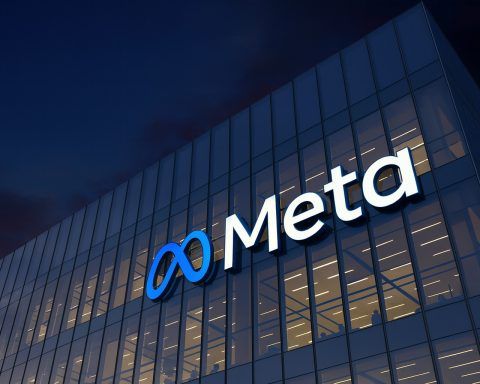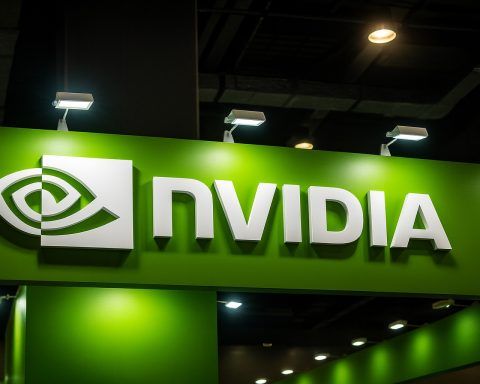Key Facts: NIO (NYSE:NIO) stock is trading around $7.25 on Nov 1, 2025 [1], up roughly 50% year-to-date [2]. Its 52-week range is about $3.02–$8.01 [3]. In late October 2025, NIO set a new delivery record of 40,397 EVs in October (a 92.6% YoY gain) [4], pushing 2025 year-to-date deliveries to 241,618 (+41.9% YoY) [5]. Q3 2025 deliveries also hit an all-time high of 87,071 units (+40.8% YoY) [6]. A surprise lawsuit by Singapore’s GIC on Oct 16, 2025, alleging inflated revenue, sent NIO shares plunging ~10% intraday (to about $6.30), though NIO denied the claims [7]. By late October the stock had rebounded to mid-$6s/$7s, near its year-high. NIO’s market cap is about $17.1 billion [8], with negative earnings (forward P/E ~ -7.2) and a consensus “Hold” analyst rating (avg. target ~$6.75) [9] [10]. In September 2025 NIO also announced a $1.16 billion share sale in Hong Kong [11] to fund battery swapping infrastructure, R&D and expansion. NIO is aggressively expanding globally – adding new European markets and even the Americas (Costa Rica) this year [12] [13] – and investing heavily in EV tech (nearly 9,900 patents as of July 2025 [14]).
Recent News & Stock Moves
In the past few days NIO has continued to dominate headlines. On Nov 1, 2025, NIO issued a press release confirming October deliveries of 40,397 vehicles (a record monthly high, +92.6% YoY) [15]. This cements strong momentum from Q3 (87,071 vehicles delivered) [16]. New family-friendly and compact models (the ONVO L90 SUV and Firefly EV) are driving the boom – Morgan Stanley notes the Onvo L90 had “far above expectations” pre-orders (30,000+ reserves) [17] [18]. NIO Day 2025 in September further showcased new products (the 3rd-gen All-New ES8 large SUV and the ET9 flagship sedan) [19] [20]. CEO William Li hailed 2025 as a “turning point”, saying BEV user experiences are now outweighing recharging inconveniences and that the premium EV market is accelerating into the electric era [21].
However, on October 16 Singapore’s sovereign wealth fund GIC sued NIO for fraud (first reported by Malay Mail), claiming $600M of inflated revenue. News of the suit sent NIO ADS shares down about 10% intraday [22] (closing near $6.30). Although a shock, investors note NIO quickly rebounded to the mid-$6s. As of early Nov 2025, NIO stock is trading up on the week, around $7.25 [23] (up +3.4% on Oct 31 according to MarketBeat [24]). Wall Street sees recent volatility as part of a “rollercoaster” year [25].
Stock Price & Market Performance
NIO’s share price has rallied sharply in 2025 but remains volatile. After plunging to multi-year lows (~$4–5) in early 2025, the stock surged >40% in July on news of affordable models and cost cuts [26]. By October 2025 NIO was trading near the top of its 52-week range [27]. On Oct 31 it closed at $7.24 [28] (midday high ~$7.27 [29]). Market data show a 50-day moving average around $6.87 and 200-day at $5.02 [30], reflecting strong upward momentum. Trading volume has been above average, indicating heightened interest. NIO’s market cap is ~$17.1B [31], and it still carries substantial cash (roughly $3.6B after recent equity raises).
In comparison to peers, NIO’s stock has outpaced large rivals this year. For example, ts2.tech notes that BYD’s stock has actually fallen ~30% from its peak amid China’s EV price war [32], even as NIO stock is up ~50% YTD [33]. On the other hand, XPeng shares and deliveries have grown even faster in 2025 [34], and profitable Chinese EVs like Li Auto have seen big gains. Globally, NIO’s valuation remains modest – far below its 2021 peak ($62) – reflecting that investors are still waiting for sustainable profits [35].
Analyst Commentary & Future Outlook
Analysts are divided on NIO’s outlook. Recent reports show a mixed picture [36] [37]. In late September, major firms made bullish adjustments: Citigroup raised its price target to $8.60 (with a “buy” rating) [38], and UBS lifted its target to $8.50 and upgraded to “buy” [39]. Bank of America also raised its target to $7.10 (neutral) [40]. Overall 26 analysts cover NIO: 4 buys, 7 holds, 2 sells, with an average target ~$6.75 [41]. MarketBeat notes Morgan Stanley and UBS have been positive in recent months [42].
For Q4 2025, consensus remains cautious. NIO guided to another quarterly loss (ending Sept 2025 EPS of -$0.32 missed estimates) [43], and analysts project a full-year 2025 EPS of about -1.43 [44]. Some bulls argue that delivery growth and cost cuts could narrow losses by Q4, potentially reaching breakeven (as ts2 reports, bulls “expect a break-even quarter by Q4 2025” [45]). Others point to Visible Alpha data expecting the first annual profit only by 2029 [46]. In short, the stock’s short-term trajectory will depend on execution: Q3 results (due Nov 19, 2025) and whether NIO can turn its rapid sales growth into cash flow.
Looking to 2026 and beyond, long-term forecasts vary widely. In a bull case scenario, analysts envision NIO doubling its stock price by 2026 – driven by continued fast deliveries, successful U.S./Europe expansion, and margin recovery. For instance, some forecasts (e.g. market analysis sites) model 50%-plus CAGR in revenues and NIO trading at premium EV multiples [47]. In a base case, moderate 30-40% growth could still lift shares 50–80% by 2026 (as one analysis suggests) [48]. Bearish scenarios warn that persistent losses, intense competition or policy shifts (like subsidy cuts in China) could cap gains or even push NIO sideways. The consensus among serious analysts is that NIO remains a high-risk, high-reward stock: growth prospects are bright, but profitability is not yet in sight [49] [50].
Technology & Products Update
NIO continues to push its EV technology and product roadmap. Its patented innovations are broad: as of July 2025 NIO had filed nearly 9,900 patents across areas like autonomous driving, battery systems, and smart power [51]. NIO champions unique offerings like its Battery-as-a-Service (BaaS) and a fast-charging/battery-swap network (over 5,000 swap stations in China). At NIO Day 2025, the company launched the all-new ES8 – a flagship 7-seat SUV (3rd gen) – and a special ET9 Horizon Edition sedan [52] [53]. The ES8 rollout (Sept 2025) prioritized the 100-kWh pack for production, even at the expense of some swap-station inventory [54], signaling strong demand (initial 2025 production capacity of 40,000 is already sold out [55]). NIO is also scaling up its ONVO mass-market sub-brand: the new L90 SUV (launched Aug 2025) has been a hit (15,000+ deliveries in Sept [56] and huge preorders [57]). The compact FIREFLY EV brand debuted deliveries in Europe (Norway, Netherlands) in Aug 2025 [58], and is coming to Asia (Singapore RHD model in 2026 [59]).
Global Expansion & Partnerships
NIO is aggressively growing outside China. In Europe, it has already entered 10+ countries and in June 2025 announced seven more EU markets (Austria, Belgium, Czech, Hungary, Luxembourg, Poland, Romania) via partnerships with local distributors [60]. As Thijs Meijling (Head of NIO Europe) put it, “Europe is a core pillar of our global strategy… we see tremendous potential for smart, user-centric mobility” [61]. NIO is even rolling out dual-brand showrooms (NIO + firefly) in these markets [62] to cover premium and urban segments.
In Asia-Pacific, NIO will enter Singapore (partnered with Wearnes Automotive) and Uzbekistan (with Abu Sahiy Motors) in 2025–26 [63]. Crucially, NIO is making its first foray into the Americas via Costa Rica in partnership with the local EV distributor [64]. (This marks NIO’s debut in any American market.) In all new markets, initial model lineups will include key NIO/ONVO/Firefly vehicles (e.g. EL8, EL6, ET5, L60, and Firefly) [65]. These partnerships leverage local dealer networks to expand NIO’s global footprint quickly, even as it maintains a direct sales model in China and key regions.
Strategic partnerships also include tech and supply chain. For example, in Sept 2025 NIO worked with battery partner CATL to prioritize pack supply to new ES8 cars (versus swap stations) due to limited inventory [66]; it plans to fully refill all stations by Jan 2026 [67]. On semiconductors, NIO stands to benefit from easing US-China tensions: as of Nov 1, 2025 the US agreed to allow chipmaker Nexperia (Wingtech-owned) to resume shipments from its Chinese factories [68], alleviating a potential auto-chip shortage.
Market & Geopolitical Context
NIO’s business is heavily influenced by global EV trends and geopolitics. Domestically, China’s EV sector is grappling with overcapacity and price wars. Notably, China’s 15th Five-Year Plan (2026-2030) omitted EVs from its strategic industries list [69], signaling that subsidies and policy support will be dialed back. This shift reflects a saturated market with fierce competition (dozens of EV brands vying for sales) [70]. Slower growth or subsidy cuts in China could pressure NIO and peers (Tesla’s China sales, for instance, have slowed recently).
On the flip side, macro tailwinds exist: rising EV adoption worldwide and stable/reduced interest rates help growth stocks. In late 2025 the U.S. even cut some tariffs on China, and companies are negotiating trade policies – though any new restrictions (e.g. tariffs on Chinese cars or tech exports) remain a risk. A notable positive has been the US-China chip deal (Nexperia above) easing a short-term bottleneck.
In the broader market, legacy auto and EV stocks have rallied lately. Tesla hit new highs on strong sales and updates [71], but Chinese EV names have lagged due to onshore weakness. NIO’s trajectory will depend in part on how it weathers these forces: it is still vulnerable to a slowing China economy or trade disruptions (it has significant U.S.-listed ADS exposure). Its battery-swapping network and BaaS give some insulation (customers save on upfront costs), and its shift to distributor sales in many markets reduces capital needs.
Competition – Tesla, BYD, XPeng & Others
NIO is often billed as “China’s Tesla,” but the competitive landscape is brutal. Tesla remains the global leader – releasing new Model Y updates, rolling out its robotaxi, and enjoying U.S. tax-credit tailwinds [72] – and its Chinese Gigafactory is churning Model Ys at scale. BYD still dominates China’s EV sales (though it also sells hybrids and affordable EVs), but even BYD saw Q3 2025 profit fall ~33% and sales dip as rivals erode share [73]. BYD recently cut its 2025 sales target to 4.6M (16% below plan) and offered discounts to stay competitive [74]. The fact that BYD’s market share slid to 14% (from 18% a year ago) shows how cut-throat the market is [75]. BYD is now focusing on exports (doubling EV exports in 2025 [76] and entering Japan and South America), indirectly validating NIO’s own global ambitions.
Among other Chinese EV makers: XPeng has been growing faster in deliveries and stock gains in 2025 [77]. Li Auto is already profitable and expanding its hybrid lineup, giving investors confidence. Mass-market brands like Zeekr, Neta, Great Wall (ORA), and Leapmotor are targeting mid-price segments, adding pressure on NIO’s ONVO line. Even legacy giants (Great Wall, Geely) are launching EVs.
However, NIO has some unique advantages: its battery-swapping network (absent in Tesla and many rivals) can appeal to urban users who rent batteries. Its multi-brand strategy (premium NIO + family ONVO + urban firefly) aims to capture more customers. Ts2.tech notes that investors are in a “show me” mode: bulls point to NIO’s expanding lineup and improving unit margins, while bears focus on its cash burn and years to profitability [78] [79].
Strategic Partnerships & Initiatives
Beyond sales and tech, NIO is forging key partnerships. It has deals to localize distribution in each new market (e.g. Hedin Mobility in Belgium/Luxembourg, AutoWallis in Central Europe [80]). In battery tech, NIO continues joint research (with CATL and others) on next-gen cells. The company also invests in autonomous driving – its NIO AD and NIO Self-driving platform – though full self-driving services remain a future goal.
NIO’s financial moves are also strategic: after the Sept 2025 HK share sale, the balance sheet has room to fund expansion. It still carries debt (allied with cash reserves), but as of Q2 2025 was focusing on high-growth reinvestment. That said, the GIC lawsuit introduces uncertainty; a prolonged legal battle could be a drag. For now, NIO’s management has downplayed it, calling it “groundless”. Still, investors watch closely for any negative impact on guidance or cash flow.
Outlook and Forecasts
As of Nov 2025, the outlook for NIO’s stock is mixed. Short-term (Q4 2025): With delivery growth still strong, revenues should rise, but the company will likely report another quarterly loss (consensus forecast still negative EPS). Some analysts have modestly raised targets on delivery strength, but the stock trades near those targets. The next catalyst is the Q3 earnings (Nov 19, 2025): investors will parse sales vs. profit, cost cuts, and guidance for Q4. If NIO can show a path to narrower losses (through economies of scale or pricing power), it could sustain the rally.
Long-term (2026+): In a bullish scenario, NIO’s aggressive expansion into Europe and possibly the U.S. (some speculate assembly in North America could come later) pays off. If EV adoption accelerates as many expect, NIO could command a large premium segment share in China and grow internationally. Analysts envision delivery CAGR in the 30–50% range in 2026-30 under these assumptions. Visible Alpha’s street consensus (pre-earnings) does not fully embrace this optimism: many models assume NIO will only reach full-year profit by 2029 [81]. In other words, at least a few more years of losses are priced in.
Actual stock forecasts vary: some bull-case price models (e.g. market analysis sites) show NIO more than doubling from late-2025 levels by end-2026 [82], while bear-case models have it stuck flat or down if conditions sour. For now, the average of analysts still sits in the high-$6s [83], reflecting a market torn between NIO’s inspiring growth story and its challenging industry dynamics.
Bottom Line: NIO is at an inflection point. It boasts record sales, new hit models (L90 SUV, firefly EV) and an aggressive global push – reasons for optimism. As CEO William Li says, the premium EV market is shifting to electric, and NIO is “meeting user needs with high-quality products and services” [84]. On the other hand, intense competition (from Tesla to new Chinese players), potential regulation changes, and the cloud of legal/earnings risks make it a speculative bet. Investors should watch the upcoming earnings, delivery trends, and geopolitical news. The stock is volatile, but one thing’s clear: NIO Inc. is no longer just an upstart – it’s a mature EV contender that could reshape the auto industry (for better or worse) in the years ahead.
Sources: Recent news and data from NIO press releases [85] [86], Reuters and Bloomberg finance reports [87] [88], ts2.tech analysis [89] [90], and other reputable financial media [91] [92], all current as of Nov 1, 2025.
References
1. www.reuters.com, 2. ts2.tech, 3. www.reuters.com, 4. www.globenewswire.com, 5. www.globenewswire.com, 6. ts2.tech, 7. ts2.tech, 8. www.reuters.com, 9. www.marketbeat.com, 10. www.reuters.com, 11. www.ainvest.com, 12. www.nio.com, 13. cnevpost.com, 14. www.nio.com, 15. www.globenewswire.com, 16. ts2.tech, 17. ts2.tech, 18. ts2.tech, 19. www.nio.com, 20. cnevpost.com, 21. www.nio.com, 22. ts2.tech, 23. www.reuters.com, 24. www.marketbeat.com, 25. ts2.tech, 26. ts2.tech, 27. www.reuters.com, 28. www.marketbeat.com, 29. www.marketbeat.com, 30. www.marketbeat.com, 31. www.reuters.com, 32. ts2.tech, 33. ts2.tech, 34. ts2.tech, 35. ts2.tech, 36. www.marketbeat.com, 37. ts2.tech, 38. www.marketbeat.com, 39. www.marketbeat.com, 40. www.marketbeat.com, 41. www.marketbeat.com, 42. www.marketbeat.com, 43. www.marketbeat.com, 44. www.marketbeat.com, 45. ts2.tech, 46. www.reuters.com, 47. www.markets.com, 48. www.markets.com, 49. ts2.tech, 50. www.reuters.com, 51. www.nio.com, 52. www.nio.com, 53. www.nio.com, 54. cnevpost.com, 55. cnevpost.com, 56. ts2.tech, 57. ts2.tech, 58. cnevpost.com, 59. cnevpost.com, 60. www.nio.com, 61. www.nio.com, 62. www.nio.com, 63. cnevpost.com, 64. cnevpost.com, 65. cnevpost.com, 66. cnevpost.com, 67. cnevpost.com, 68. www.reuters.com, 69. www.reuters.com, 70. www.reuters.com, 71. www.nasdaq.com, 72. www.nasdaq.com, 73. www.reuters.com, 74. www.reuters.com, 75. www.reuters.com, 76. www.reuters.com, 77. ts2.tech, 78. ts2.tech, 79. www.reuters.com, 80. www.nio.com, 81. www.reuters.com, 82. www.markets.com, 83. www.marketbeat.com, 84. www.nio.com, 85. www.globenewswire.com, 86. www.nio.com, 87. www.reuters.com, 88. www.reuters.com, 89. ts2.tech, 90. ts2.tech, 91. www.marketbeat.com, 92. www.reuters.com






